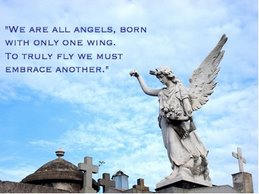Persian New Year: First Day of Spring, NoRouzing....
The first day of spring marks the beginning of Nowruz, the Persian New Year. The celebration lasts 13 days and is rooted in the 3,000-year-old tradition of Zorastrianism.
It's spring. Time to plan for the new year. Yes, yes, we know. We just did that.
The tradition marks the first day of spring and offers rich symbolic experiences.
Norouz (also spelled Nowruz or No-Ruz), meaning "new day," is a secular holiday.
It pays tribute to the rebirth of nature, the beginning of life, the creation of the universe. Who can argue with that?
Preparations for Norouz include an all-out spring-cleaning, called khaneh takani, to get out the demons, cleanse the self and start afresh. Sweeping and scrubbing are two essential activities, but feel free to throw on a new coat of paint and buy some new clothes while you're at it.
One week before the Persian New Year, Persian families also start growing sabzeh (see picture below) - lentil or wheat sprouts, a sign of renewal.

The "new day" occurs on the vernal (spring) equinox. This year it coincides with sunrise in Europe.
March 20, 2008, is a date that most of us recognize as symbolic of changing seasons. As we welcome spring, people south of the equator are actually gearing up for the cooler temperatures of autumn.
What Happens at the Equinox?
Far from being an arbitrary indicator of the changing seasons, March 20 (March 21 in some years) is significant for astronomical reasons. On March 20, 2008, at precisely 1:48 A.M. EDT (March 20, 05:48 Universal Time), the Sun will cross directly over the Earth's equator. This moment is known as the vernal equinox in the Northern Hemisphere. For the Southern Hemisphere, this is the moment of the autumnal equinox. Equinox Means "Equal Night".
This year, 2008, exact time when the sun directly crosses over the earth's equator in different time zones:
Tehran: Thursday: 09:18:19 AM March 20, 2008
New York:Thursday 01:48:19 AM March 20, 2008
Los Angeles: Wednesday 10:48:19 PM March 19, 2008
Berlin: Thursday 06:48:19 AM March 20, 2008
The focus of this day is a special table setting featuring symbolic elements. Called the Haft-Seen-literally "seven S's" - these ceremonial arrangements bring together the seven heralds of life: love, patience, rebirth, prosperity, spice of life, spring and health.
Each element of the setting begins with "seen," the Persian letter s, such as senjed (oleaster, a sweet dried fruit of the lotus family), representing love; and sonbol (hyacinth), symbolizing the spring season and renewal.
The family gathers in one home - usually that of the family elders. Around the Haft-Seen, family members sing and do readings - often of the verses of the beloved 14th-century poet Hafez. And finally, there is the meal, a lavish, colorful experience of exquisite tastes and aromas, followed by lots of sweets.

 ABF, for the promotion of human rights and democracy in Iran
ABF, for the promotion of human rights and democracy in Iran



3 comments:
It is Haft Sheen. Islamize Norooz and you get haft seen. Sharob (wine) became serkeh (vinegar). The rest was made up. Shokofeh, Shirini, Shir, Sham, Sher (poetry) are real. You like to know more about Islamization of our good culture and demise of it: We do not have Haji Firooz!!! Read below
Meaning of Haji Firooz is not "Black Face"
by ReflectionEternal (not verified) on Sat Nov 17, 2007 04:58 AM PST
My black friends were uncomfortable when attending a No Rooz party a while back because they saw our Haji Firooz dancing around. Even I for a moment did not defend it because I understood their sensitivity. It prompted me to look it up. Before he was HAJI because of Islamization, he was an assimilation of these characters:
Domuzi, who was killed at the end of each year and reborn at the beginning of the New Year, symbolizes the rebirth of the Sumerian god of sacrifice.
On the ending days of the old year people abandon everything, which appears in the color of oldness, darkness, and unutilization the manifestation of en masse revolution of people to clean and to destroy tyrant souls, who live in the blackness of oldness and death is the symbol of man’s separation from decey and past sinful living. Hense the black face was a symbol for the dead to remind the rest that YOU are alive! Enjoy life! Break all the grudges and ill-will towards others! Life is short! Only after dying you will understand this! So I am here to tell you friends!
Dameshiq in Nokhbatoddahr refers to a man who comes on No Rooz day sunrise to Sassanid court. He ststes this man introduces himself as Pirouz (victorious) and Khojaste (fortunate). He claims to come from God and bring with himself health and joy with New Year. Still, in New Year, the first person should be fortunate one that brings health, power, joy and blessing for family members.
In Zorastrian mythology this Pirouz man was a symbolic man who saw the light of God and had his face covered in soot. Nothing racist or demoralizing.
The arabization of him being HAJI has created this confusion. And with the conmingling of Arabs who did not know our traditions speculation as well as adopting their spin on the subject may have at the state of confusion on this matter today. As any culture who just accepts tradition blindly from the preceding generation the ignorance will continue. Unless we delve deeper in search of the true origins we will continue to misconstrue our culture like accepting the language of Parsi as Farsi, another arabic misnomer/mispronunciation.
Anon: Great info. Would you please cite a few sources on the internet or books that might be helpful in correcting these outstanding issue? Thanks.
Beautiful pictures, a fine post. Thanks for sharing.
Post a Comment